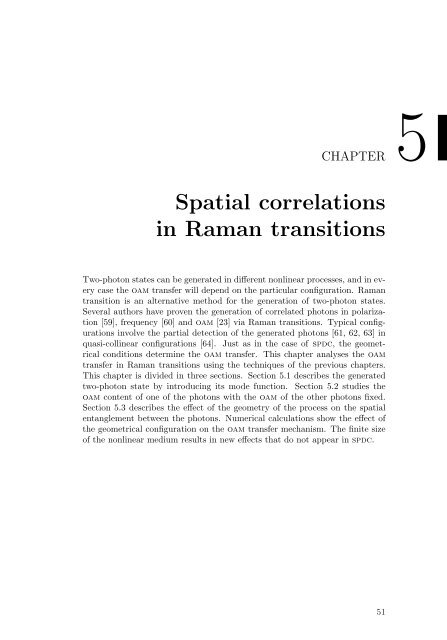Spatial Characterization Of Two-Photon States - GAP-Optique
Spatial Characterization Of Two-Photon States - GAP-Optique
Spatial Characterization Of Two-Photon States - GAP-Optique
You also want an ePaper? Increase the reach of your titles
YUMPU automatically turns print PDFs into web optimized ePapers that Google loves.
CHAPTER 5<br />
<strong>Spatial</strong> correlations<br />
in Raman transitions<br />
<strong>Two</strong>-photon states can be generated in different nonlinear processes, and in every<br />
case the oam transfer will depend on the particular configuration. Raman<br />
transition is an alternative method for the generation of two-photon states.<br />
Several authors have proven the generation of correlated photons in polarization<br />
[59], frequency [60] and oam [23] via Raman transitions. Typical configurations<br />
involve the partial detection of the generated photons [61, 62, 63] in<br />
quasi-collinear configurations [64]. Just as in the case of spdc, the geometrical<br />
conditions determine the oam transfer. This chapter analyses the oam<br />
transfer in Raman transitions using the techniques of the previous chapters.<br />
This chapter is divided in three sections. Section 5.1 describes the generated<br />
two-photon state by introducing its mode function. Section 5.2 studies the<br />
oam content of one of the photons with the oam of the other photons fixed.<br />
Section 5.3 describes the effect of the geometry of the process on the spatial<br />
entanglement between the photons. Numerical calculations show the effect of<br />
the geometrical configuration on the oam transfer mechanism. The finite size<br />
of the nonlinear medium results in new effects that do not appear in spdc.<br />
51



